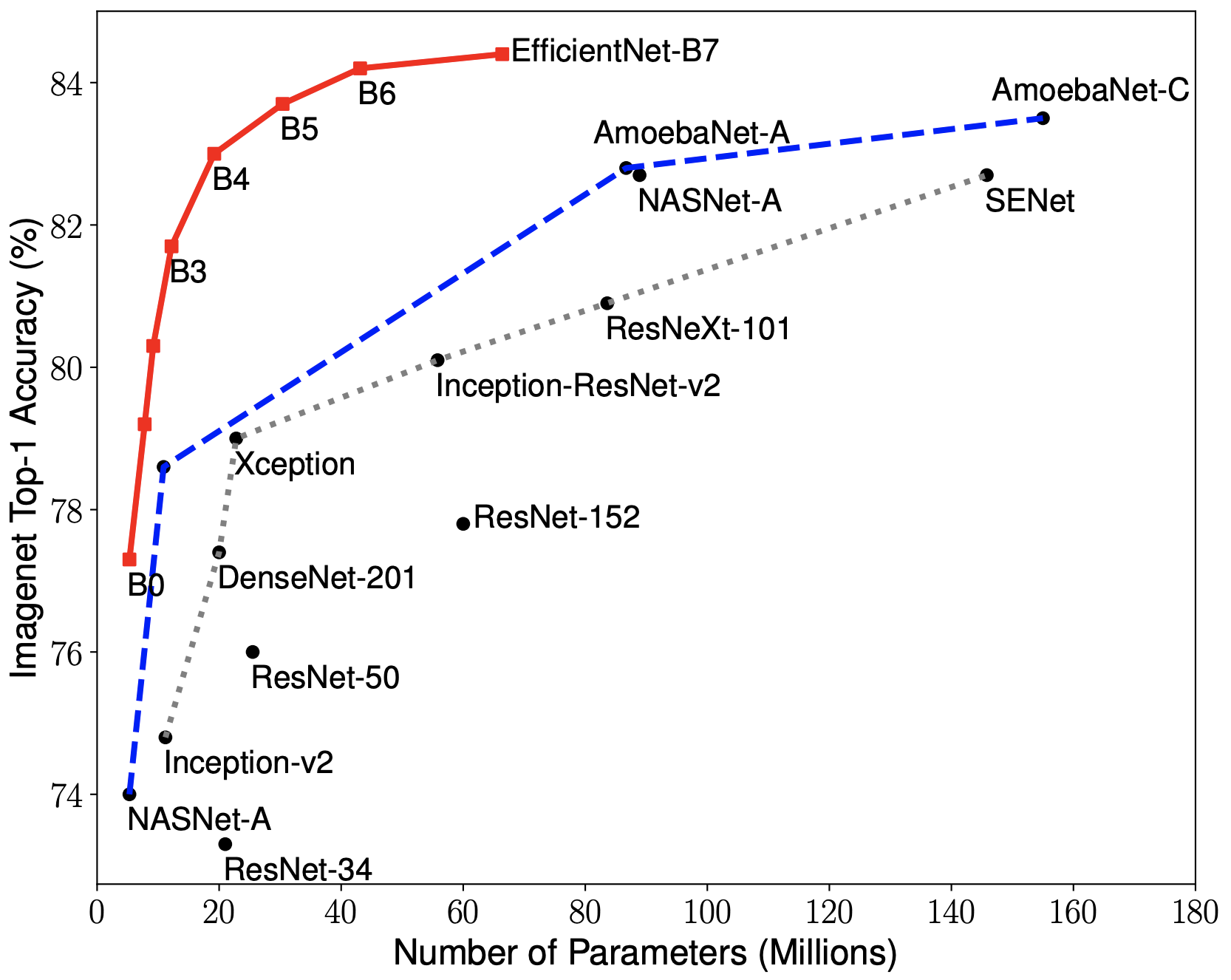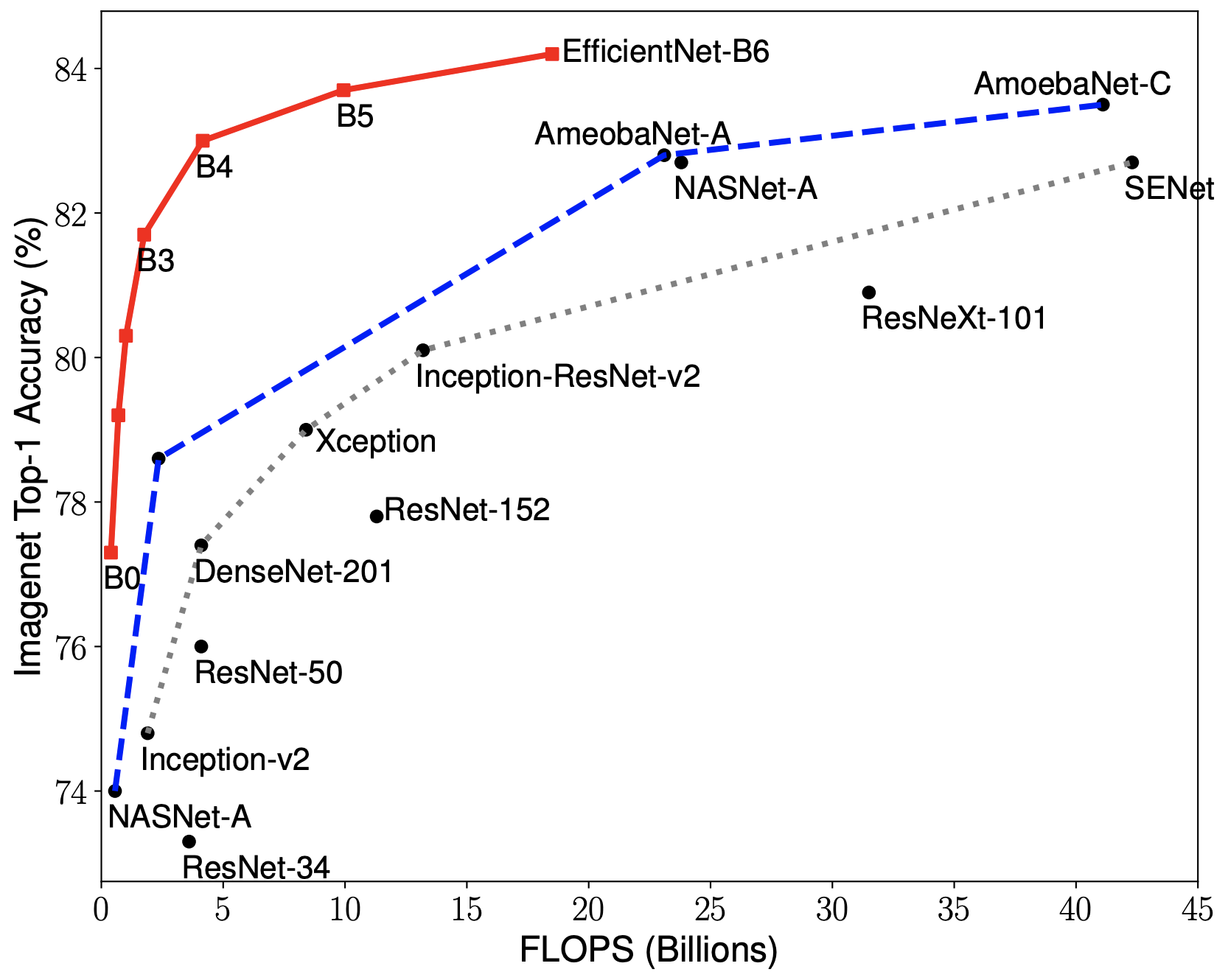
Security News
Official Go SDK for MCP in Development, Stable Release Expected in August
The official Go SDK for the Model Context Protocol is in development, with a stable, production-ready release expected by August 2025.
node-efficientnet
Advanced tools
This repository contains a tensorflowJs implementation of EfficientNet, an object detection model trained on ImageNet and can detect 1000 different objects.
EfficientNet a lightweight convolutional neural network architecture achieving the state-of-the-art accuracy with an order of magnitude fewer parameters and FLOPS, on both ImageNet and five other commonly used transfer learning datasets.
The codebase is heavily inspired by the TensorFlow implementation.

| locale | status | translate by 👑 |
|---|---|---|
en | ✅ | |
zh | ✅ | @luoye-fe |
es | ✅ | @h383r |
ar | ✅ | @lamamyf |
ru | ✅ | @Abhighyaa |
he | ✅ | @jhonDoe15 |
fr | ✅ | @burmanp |
other | ⏩ (need help, PR welcome ) |
docker-compose upEfficientNet has 8 different model checkpoints each checkpoint as different input layer resolution for larger input layer resolution, the greater the accuracy and the running time is slower.
for example lets take this images:

|
| ||||||

|
| ||||||

|
| ||||||

|
|
npm i --save node-efficientnet
EfficientNetCheckPointFactory.create(checkPoint: EfficientNetCheckPoint, options?: EfficientNetCheckPointFactoryOptions): Promise<EfficientNetModel>Example: to create an efficientnet model you need to pass EfficientNetCheckPoint
(available checkpoint [B0..B7]) each one of them represent different model
const {
EfficientNetCheckPointFactory,
EfficientNetCheckPoint,
} = require("node-efficientnet");
const model = await EfficientNetCheckPointFactory.create(
EfficientNetCheckPoint.B7
);
const path2image = "...";
const topResults = 5;
const result = await model.inference(path2image, {
topK: topResults,
locale: "zh",
});
Of course, you can use local model file to speed up loading
You can download model file from efficientnet-tensorflowjs-binaries, please keep the directory structure consistent, just like:
local_model
└── B0
├── group1-shard1of6.bin
├── group1-shard2of6.bin
├── group1-shard3of6.bin
├── group1-shard4of6.bin
├── group1-shard5of6.bin
├── group1-shard6of6.bin
└── model.json
const path = require("path");
const {
EfficientNetCheckPointFactory,
EfficientNetCheckPoint,
} = require("node-efficientnet");
const model = await EfficientNetCheckPointFactory.create(
EfficientNetCheckPoint.B7,
{
localModelRootDirectory: path.join(__dirname, "local_model"),
}
);
const path2image = "...";
const topResults = 5;
const result = await model.inference(path2image, {
topK: topResults,
locale: "zh",
});
download files from remote and predict using model
const fs = require("fs");
const nodeFetch = require("node-fetch");
const {
EfficientNetCheckPointFactory,
EfficientNetCheckPoint,
} = require("node-efficientnet");
const images = ["car.jpg", "panda.jpg"];
const imageDir = "./samples";
const imageDirRemoteUri =
"https://raw.githubusercontent.com/ntedgi/node-EfficientNet/main/samples";
if (!fs.existsSync(imageDir)) {
fs.mkdirSync(imageDir);
}
async function download(image, cb) {
const response = await nodeFetch.default(`${imageDirRemoteUri}/${image}`);
const buffer = await response.buffer();
fs.writeFile(`${imageDir}/${image}`, buffer, cb);
}
EfficientNetCheckPointFactory.create(EfficientNetCheckPoint.B2)
.then((model) => {
images.forEach(async (image) => {
await download(image, () => {
model.inference(`${imageDir}/${image}`).then((result) => {
console.log(result.result);
});
});
});
})
.catch((e) => {
console.error(e);
});
output :
[
{ label: "sports car, sport car", precision: 88.02440940394301 },
{
label: "racer, race car, racing car",
precision: 6.647441678387659,
},
{ label: "car wheel", precision: 5.3281489176693295 },
][
({
label: "giant panda, panda, panda bear, coon bear, Ailuropoda melanoleuca",
precision: 83.60747593436018,
},
{ label: "skunk, poleca", precision: 11.61300759424677 },
{
label: "hog, pig, grunter, squealer, Sus scrofa",
precision: 4.779516471393051,
})
];
EfficientNets rely on AutoML and compound scaling to achieve superior performance without compromising resource efficiency. The AutoML Mobile framework has helped develop a mobile-size baseline network, EfficientNet-B0, which is then improved by the compound scaling method to obtain EfficientNet-B1 to B7.

|

|
EfficientNets achieve state-of-the-art accuracy on ImageNet with an order of magnitude better efficiency:
In high-accuracy regime, EfficientNet-B7 achieves the state-of-the-art 84.4% top-1 / 97.1% top-5 accuracy on ImageNet with 66M parameters and 37B FLOPS. At the same time, the model is 8.4x smaller and 6.1x faster on CPU inference than the former leader, Gpipe.
In middle-accuracy regime, EfficientNet-B1 is 7.6x smaller and 5.7x faster on CPU inference than ResNet-152, with similar ImageNet accuracy.
Compared to the widely used ResNet-50, EfficientNet-B4 improves the top-1 accuracy from 76.3% of ResNet-50 to 82.6% (+6.3%), under similar FLOPS constraints.
The performance of each model variant using the pre-trained weights converted from checkpoints provided by the authors is as follows:
| Architecture | @top1* Imagenet | @top1* Noisy-Student |
|---|---|---|
| EfficientNetB0 | 0.772 | 0.788 |
| EfficientNetB1 | 0.791 | 0.815 |
| EfficientNetB2 | 0.802 | 0.824 |
| EfficientNetB3 | 0.816 | 0.841 |
| EfficientNetB4 | 0.830 | 0.853 |
| EfficientNetB5 | 0.837 | 0.861 |
| EfficientNetB6 | 0.841 | 0.864 |
| EfficientNetB7 | 0.844 | 0.869 |
* - topK accuracy score for converted models (imagenet val set)
if (this.repo.isAwesome || this.repo.isHelpful) {
Star(this.repo);
}
FAQs
Implementation of efficientNet model in nodejs
The npm package node-efficientnet receives a total of 20 weekly downloads. As such, node-efficientnet popularity was classified as not popular.
We found that node-efficientnet demonstrated a not healthy version release cadence and project activity because the last version was released a year ago. It has 1 open source maintainer collaborating on the project.
Did you know?

Socket for GitHub automatically highlights issues in each pull request and monitors the health of all your open source dependencies. Discover the contents of your packages and block harmful activity before you install or update your dependencies.

Security News
The official Go SDK for the Model Context Protocol is in development, with a stable, production-ready release expected by August 2025.

Security News
New research reveals that LLMs often fake understanding, passing benchmarks but failing to apply concepts or stay internally consistent.

Security News
Django has updated its security policies to reject AI-generated vulnerability reports that include fabricated or unverifiable content.